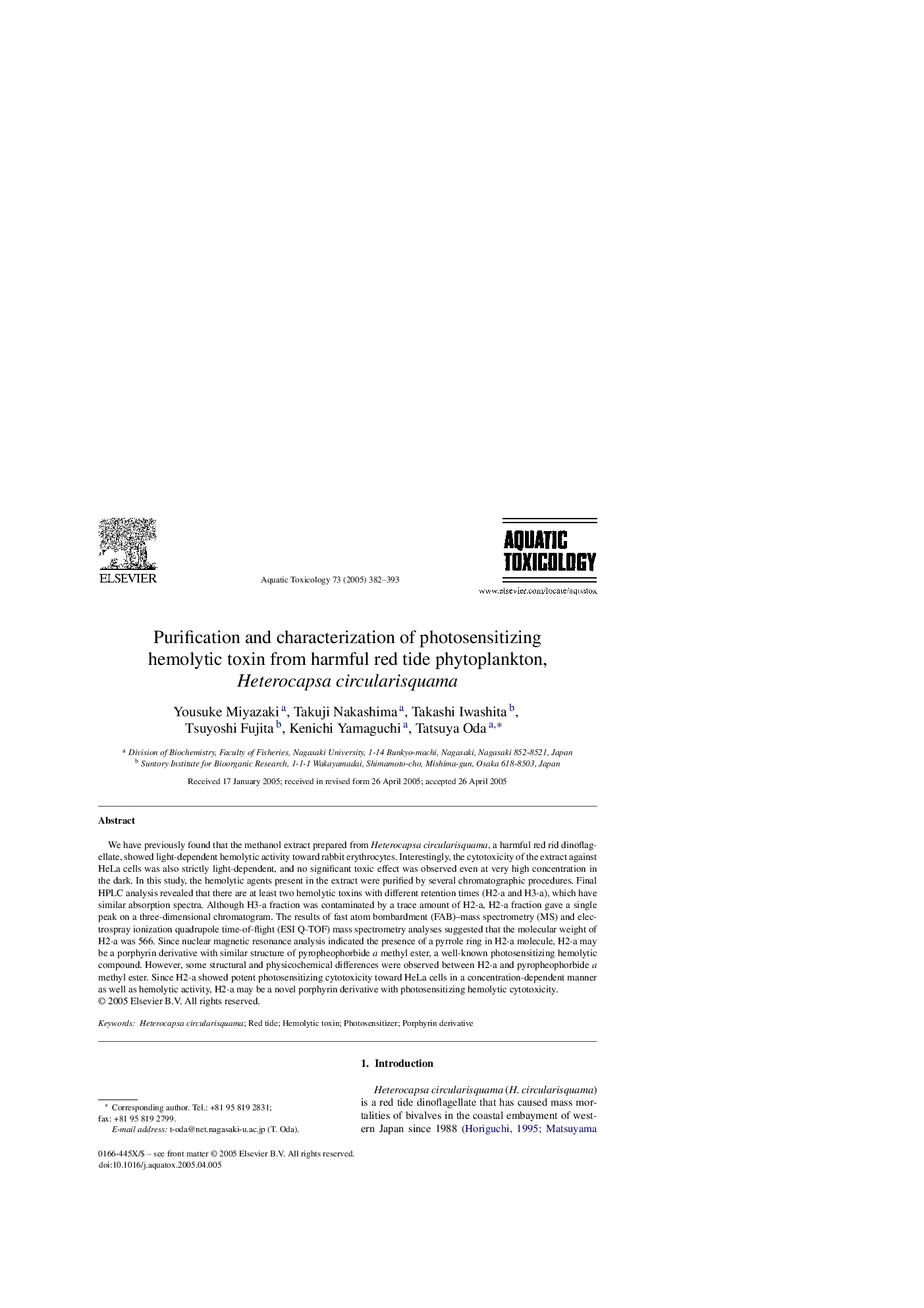| Article ID | Journal | Published Year | Pages | File Type |
|---|---|---|---|---|
| 9478249 | Aquatic Toxicology | 2005 | 12 Pages |
Abstract
We have previously found that the methanol extract prepared from Heterocapsa circularisquama, a harmful red rid dinoflagellate, showed light-dependent hemolytic activity toward rabbit erythrocytes. Interestingly, the cytotoxicity of the extract against HeLa cells was also strictly light-dependent, and no significant toxic effect was observed even at very high concentration in the dark. In this study, the hemolytic agents present in the extract were purified by several chromatographic procedures. Final HPLC analysis revealed that there are at least two hemolytic toxins with different retention times (H2-a and H3-a), which have similar absorption spectra. Although H3-a fraction was contaminated by a trace amount of H2-a, H2-a fraction gave a single peak on a three-dimensional chromatogram. The results of fast atom bombardment (FAB)-mass spectrometry (MS) and electrospray ionization quadrupole time-of-flight (ESI Q-TOF) mass spectrometry analyses suggested that the molecular weight of H2-a was 566. Since nuclear magnetic resonance analysis indicated the presence of a pyrrole ring in H2-a molecule, H2-a may be a porphyrin derivative with similar structure of pyropheophorbide a methyl ester, a well-known photosensitizing hemolytic compound. However, some structural and physicochemical differences were observed between H2-a and pyropheophorbide a methyl ester. Since H2-a showed potent photosensitizing cytotoxicity toward HeLa cells in a concentration-dependent manner as well as hemolytic activity, H2-a may be a novel porphyrin derivative with photosensitizing hemolytic cytotoxicity.
Related Topics
Life Sciences
Agricultural and Biological Sciences
Aquatic Science
Authors
Yousuke Miyazaki, Takuji Nakashima, Takashi Iwashita, Tsuyoshi Fujita, Kenichi Yamaguchi, Tatsuya Oda,
